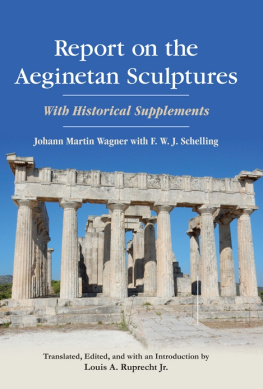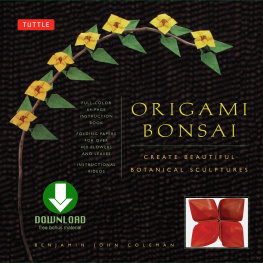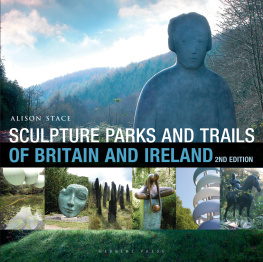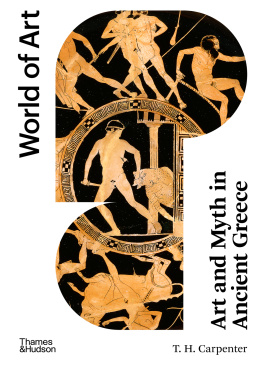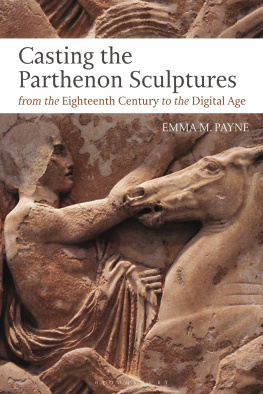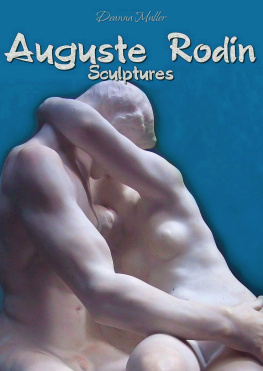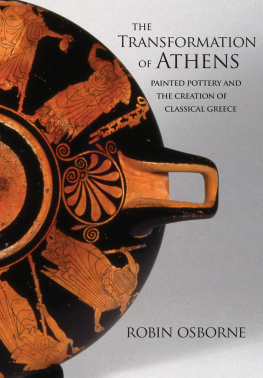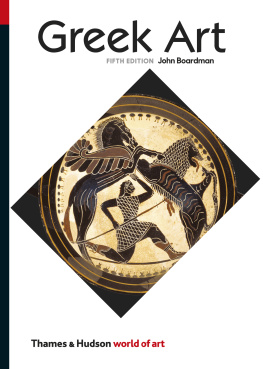REPORT ON THE AEGINETAN SCULPTURES
Report on the Aeginetan Sculptures
With Historical Supplements
Johann Martin Wagner
with F. W. J. Schelling
Translated, edited, and with an introduction by Louis A. Ruprecht Jr.
Cover image: The Temple to Aphaia on the island of Aegina, Greece (authors photograph).
Published by State University of New York Press, Albany
2017 State University of New York
All rights reserved
Printed in the United States of America
No part of this book may be used or reproduced in any manner whatsoever without written permission. No part of this book may be stored in a retrieval system or transmitted in any form or by any means including electronic, electrostatic, magnetic tape, mechanical, photocopying, recording, or otherwise without the prior permission in writing of the publisher.
For information, contact State University of New York Press, Albany, NY
www.sunypress.edu
Production, Jenn Bennett
Marketing, Anne M. Valentine
Library of Congress Cataloging-in-Publication Data
Names: Wagner, Johann Martin von, author. | Schelling, Friedrich Wilhelm Joseph von, 1775-1854. | Ruprecht, Louis A., editor, translator. | Translation of: Bericht uber die Aeginetischen Bildwerke im Besitz Seiner Konigl. Hoheit des Kronprinzes von Baiern.
Title: Report on the Aeginetan sculptures : with historical supplements/by Johann Martin Wagner with F.W.J. Schelling ; edited and translated by Louis A. Ruprecht, Jr.
Other titles: Bericht uber die Aeginetischen Bildwerke im Besitz Seiner Konigl. Hoheit des Kronprinzes von Baiern. English
Description: Albany : State University of New York Press, 2017. | Includes bibliographical references and index.
Identifiers: LCCN 2016031492 (print) | LCCN 2016032160 (ebook) | ISBN 9781438464817 (hardcover : alk. paper) | ISBN 9781438464824 (e-book)
Subjects: LCSH: Aeginetan marbles. | Ludwig I, King of Bavaria, 1786-1868Art collections. | Aegina Island (Greece)Antiquities.
Classification: LCC NB87.M8 G59 2017 (print) | LCC NB87.M8 (ebook) | DDC 730.74/495dc23
LC record available at https://lccn.loc.gov/2016031492
10 9 8 7 6 5 4 3 2 1
This book is dedicated to my brother
CLIFFORD HOLT RUPRECHT
, , ,
Then, I said, as the saying goes, Let a brother stand by a man
Plato, Republic 362d
[On the island of Aegina] there are three temples () very close to one another: one for Apollo, one for Artemis, and a third for Dionysus. Apollo is depicted by a nude wooden image ( ) made in the local style, whereas Artemis is clothed (), as is Dionysus, who is also depicted with a beard. The sanctuary () of Asklepios is located in another place, not here, and has a seated stone statue ( ). Of all the gods, the Aeginetans honor Hekate the most, and celebrate sacred rites () for her every year, rites they say were founded by Orpheus the Thracian. Inside the sacred enclosure ( ) is a temple () with a wooden image by Myron ( ), stylistically similar () in the face and the rest of the body. It seems to me that Alkamenes was the first to make a statue with three images of Hekate attached to one another, an image that the Athenians call Turret-Round (); it is set up near the temple of the Wingless Victory.
On Aegina, as you make your way up to the mountain of Panhellenic Zeus, there is a sanctuary () for Aphaia, in whose honor Pindar composed an ode for the Aeginetans. The Cretans say (the story of Aphaia is a local legend) that Karmanor, who purified Apollo after he had killed the Python, had a son named Euboulus, and that Eubouloss daughter Carme conceived a child with Zeus, which was Britomartis. She took delight in racing and in hunting, and was the very closest friend ( ) of Artemis. Fleeing from Minos, when he was enflamed () for her, she threw herself into nets ( ) that had been cast out to gather fish. She was made a goddess () by Artemis, and she is revered () not only by the Cretans but also by the Aeginetans, who say that Britomartis herself also appears on their island. Her name according to the Aeginetans is Aphaia whereas it is Diktynna on Crete. The Panhellenic Mountain, except for the sanctuary () of Zeus, does not have anything else worthy of mention (). This sanctuary (), they say, was made by Aiakos for Zeus.
Pausanias, Guide to Greece II.30.34
[S]o immature art, as we now see, has its own attractiveness in the navet , the freshness of spirit, which finds power and interest in simple motives of feeling, and in the freshness of hand, which has a sense of enjoyment in mechanical processes still performed unmechanically, in the spending of care and intelligence on every touch. As regards Italian art, the sculpture and paintings of the earlier Renaissance, the aesthetic value of this navet is well understood; but it has its value in Greek sculpture also. In a sort of stiff grace, combined with a sense of things bright or sorrowful directly felt, the Aeginetan workman is as it were the Chaucer of Greek sculpture.
Walter Pater, The Marbles of Aegina (1925)
CONTENTS
, by Johann Martin Wagner with F. W. J. Schelling
LIST OF ILLUSTRATIONS
FOUR MODERN CASTS OF THE AEGINETAN PEDIMENTS,
RESTORED AND DE-RESTORED, 2011 (FIGURES I.12I.15)
| . |
| . | . |
| . | . |
| . |
| . |
| . |
| . |
| . |
| . |
| . |
| . |
| . |
| . |
| . |
| . |
| . |
| . |
| . |
| . |
| . |
| . |
| . |
| . |
| . |
| . |
| . |
| . |
| . |
| . |
| . |
A NOTE ON THIS TRANSLATION
A brief word of explanation may be in order regarding some of the translational decisions and strategies that have informed this work. I highlight the most important of them here.
First, the references to classical figures are not standardized. In general, I prefer to transliterate Greek names in ways that more closely mirror the Greek original. The exceptions are those figures whose names are so well established as to be virtually canonical; to change these names would, I fear, actually be confusing to many readers. So I will refer to Aiakos rather than Aeacus, Herakles rather than Hercules, and Pheidias rather than Phidias but Achilles will not become Achilleus, Daedalus will not become Daidalos, and Crete will not become Krt.
The matter of names is complicated still further by the fact that both Wagner and Schelling Latinize all of their references to Greek divinities. So the sacred site on Aegina is consistently (and erroneously) referred to as the Temple of Panhellenic Jupiter, not Zeus, and the central goddess in the pedimental group is called Minerva rather than Athena. This is a very significant aspect of nineteenth-century classical scholarshipthe filtering of Greek image through later Latin formabout which I have written elsewhere; it seemed important to me to maintain the Latin as it appears in the original texts.
In the copious notes accompanying this translation, however, it will often be otherwise. Neither Schelling nor Wagner make it a habit actually to cite their casual references to classical literature and history. The two most commonly cited ancient sourcesPausaniass Guide to Greece and Plinys Natural History tend to be cited by book number and chapter, but that is all. I have managed to track down all but two references in this book and felt that it would make a substantial contribution to the scholarly use of this volume if these texts were actually quoted in full in the accompanying notes. For ease of reference and in the interest of standardization, I have consistently used the Loeb Classical Library edition for all of the citations where such a volume has been published, and I include the relevant Greek and Latin terms in parentheses. I have occasionally emended the translation in order to highlight a semantic distinction of some importance to my reading of the text, and have indicated this in parentheses in the relevant notes. In all but a few cases, these emendations are relatively minor.
Next page
